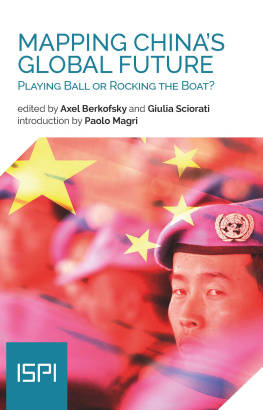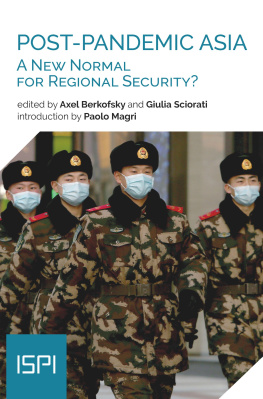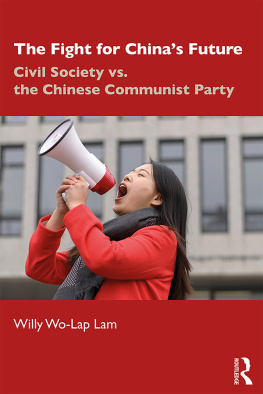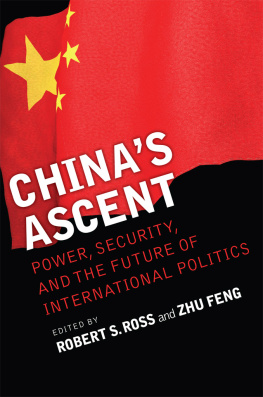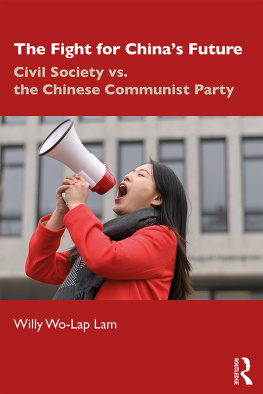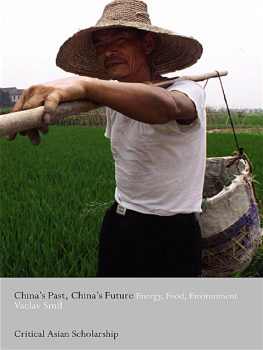Introduction
It is almost a platitude to recall that Chinas international role has grown immensely over the past few decades. Beijings stance on the world stage has expanded in economic, political, and military terms.
In 1990, the US economy was over 16 times larger than Chinas. Thirty years later it is just 1.5 times larger, and the gap is closing rapidly. In fact, at purchasing power parity, China had overtaken the US already seven years ago, in 2013. Sure, Beijings hard power still lags behind, with a current defence budget that is about one third of the USs. But here, too, the rise has been spectacular, with Chinas defence budget growing nine-fold in just two decades.
Chinas foreign policy ambitions have skyrocketed as well, in particular since the start of Xi Jinpings term as the countrys President in 2013. Within just a few years, Xi has informally shed Beijings peaceful rise narrative the official policy under his predecessor Hu Jintao (2004-2012). The message sent to the world through the peaceful rise narrative was crystal clear: despite the countrys economic boom, Beijing would continue to act with self-restraint and moderation on the world stage. This message was clearly too timid for Xis China Dream, which implies a much more assertive stance both within the region (especially on Taiwan, Hong Kong, and the South China Sea) and on the global stage, with ambitious projects such as the Belt and Road Initiative and the Asian Infrastructure Investment Bank. Xi also tried to buttress Chinas credentials as a defender of economic multilateralism. But the countrys growing assertiveness is now for everyone to be seen.
However, questions abound on whether Beijings global strategic outreach is sustainable, either in terms of material resources (economic and military) or in terms of potential reaction of allies and competitors to its rise. While past economic growth rates have been exceptional, the country cannot be expected to keep up with this trend for much longer. Indeed, recent evidence hints at the fact that Chinas growth is slowing (the IMF sees it at 6% in 2020, down from 11% in 2010). Problems that have been haunting Chinese policymakers for over a decade (but had been deftly postponed) are now in for a reckoning. It would suffice to mention the countrys burgeoning debt, especially for households and corporations (and, in particular, banks and state-owned enterprises). Moreover, the Chinese economic malaise is under way while China is still far from having caught up with developed economies, at least in terms of income per capita. Indeed, Beijing still has a long way to go: currently, it ranks below the 60th place globally, and it can still be considered a middle-income economy.
The second hurdle China faces is how the others (allies and competitors) react to its rise, both within and beyond the Asia-Pacific region. Beijings growing assertiveness has generated a backlash from its neighbours and regional partners. The construction of artificial islands in the South China Sea has scared some ASEAN countries, leading to public outcries over what they see as Beijings encroachment on their sovereign rights. The Chinese governments vocal support for Chinese unification towards Taiwan has contributed to ward off the islands policymakers and put reconciliation on hold. And Beijings efforts to exert increasing influence over Hong Kong has unleashed the most violent and pervasive protests in decades. Meanwhile, Chinas trade and industrial practices are being increasingly questioned not only by the US, but even by the European Union. Up until recently, Brussels had adopted a much softer stance; but in 2019 the EU started to screen foreign direct investment into the bloc to protect its strategic companies, and in the 2019 review of its global strategy, for the first time, the EU referred to China as a systemic competitor.
This mixture of Chinas strengths and weaknesses is proof that there is a pressing need to explore some of the key aspects of Beijings regional and global foreign and security policy. This is precisely what this Report sets about to do, as its authors attempt to analyse the core tenets that motivate and shape Chinas preferences and actions on the global stage, and their effects on its partners, allies, and rivals.
In the opening chapter, Kerry Brown examines the consequences and repercussions of Xi Jinpings so-called China Dream. The Communist Party is the custodian of the China Dream, making sure that the dream as advertised by Xi is perceived as beneficial and a blessing for the Chinese people and does not turn into a nightmare. As Brown puts it, China is not sufficiently prepared to assume global leadership, and has built its foreign and security strategy on shaky grounds.
In his chapter, Zhao Suisheng adds that Beijings foreign and security policy agenda has assumed and maintains highly assertive tones. President Xi does not shy away from calling China a global power, which alarms some US policymakers and allies in the Asia-Pacific region. Put simply, in a marked turn of events, Chinese big power diplomacy is contributing to the kind of power politics that Beijing once opposed.
In this vein, Shin Kawashima sheds light on Xis conceptualisation of a global international order. From Chinas perspective, the current international order is biased towards the USs preferences and favours US and Western interests. Beijing has now come to the point of formulating and proposing a number of alternatives to Western principles. At the same time, China does not completely oppose the UN or the principles of international law, instead endorsing or dismissing them as it suits its interests, in a pragmatic or some might argue exploitative fashion.
Political narratives are also at the heart of the chapter by Giulia Sciorati. The author analyses a new addition to the landscape of Chinas foreign policy documents: the White Paper on National Defence, issued first in 2015 and then in 2019 by the State Council. The document targets an international audience, and is therefore a reliable indicator of how China wants to portray itself to the world. Sciorati underlines that the White paper is a direct response to the US pivot to Asia strategy, and that the 2019 editions contains many more references than the 2015 one both to defence (thus hinting at Chinas military preparedness and capacity to respond to threats) and to development (and therefore to Chinas ambition to project its soft power abroad).
The next three chapters investigate the practical implications of Chinas current stance in the world. First, Harsh V. Pant examines India-China geopolitical relations in South Asia in light of Beijings increased regional assertiveness. The author stresses that, although China has acquired more room for manoeuvre on Indias periphery, smaller states in South Asia have not yet openly aligned with either China or India. On the contrary, they have been relying on a strategy revolving around their own national interests, thus moving alternatively in the direction of one power or the other.


